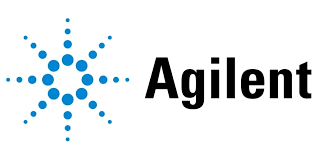Ai In Factories
Published Date: 02 June 2025 | Report Code: ai-in-factories
Ai In Factories Market Size, Share, Industry Trends and Forecast to 2033
This comprehensive report on Ai In Factories covers a wide range of insights including market overview, projected growth, segmentation, technological trends, and regional dynamics. Focused on the forecast period from 2024 to 2033, the report provides qualitative and quantitative data, detailed analyses, and strategic insights to guide stakeholders and investors in understanding the evolving market landscape.
| Metric | Value |
|---|---|
| Study Period | 2024 - 2033 |
| 2024 Market Size | $5.10 Billion |
| CAGR (2024-2033) | 12.4% |
| 2033 Market Size | $15.28 Billion |
| Top Companies | Siemens, ABB, General Electric (GE) |
| Last Modified Date | 02 June 2025 |
Ai In Factories (2024 - 2033)
Ai In Factories Market Overview
Customize Ai In Factories market research report
- ✔ Get in-depth analysis of Ai In Factories market size, growth, and forecasts.
- ✔ Understand Ai In Factories's regional dynamics and industry-specific trends.
- ✔ Identify potential applications, end-user demand, and growth segments in Ai In Factories
What is the Market Size & CAGR of Ai In Factories market in 2024?
Ai In Factories Industry Analysis
Ai In Factories Market Segmentation and Scope
Tell us your focus area and get a customized research report.
Ai In Factories Market Analysis Report by Region
Europe Ai In Factories:
Europe, with its strong emphasis on precision engineering and quality control, is expected to see its market size rise from 1.44 units in 2024 to 4.33 units by 2033. Policy initiatives aimed at fostering technological innovation and sustainability in manufacturing are key drivers of this growth.Asia Pacific Ai In Factories:
The Asia Pacific region demonstrates significant growth potential with market sizes growing from 0.98 units in 2024 to 2.93 units by 2033. Rapid industrialization, increasing investments in automation, and supportive government policies are key factors. The region is embracing AI to modernize manufacturing, and this trend is expected to accelerate as technological hubs continue to drive innovation.North America Ai In Factories:
North America remains a mature market with a solid foundation in advanced manufacturing. The market size is expanding from 1.88 units in 2024 to 5.64 units by 2033. Innovations in automation and AI integration, coupled with significant R&D investments, continue to push the boundaries of productivity and efficiency.South America Ai In Factories:
In South America, particularly in Latin America, the market is poised for considerable expansion, growing from a baseline of 0.33 units in 2024 to 1.00 unit by 2033. The region is witnessing gradual adoption of smart factory models as companies modernize their processes to remain competitive globally, despite facing infrastructural challenges.Middle East & Africa Ai In Factories:
The Middle East and Africa region is emerging as an important market, with growth figures moving from 0.46 units in 2024 to 1.39 units by 2033. This growth is spurred by increased infrastructure investments and a strategic focus on diversifying economies through smart technology adoption in industrial sectors.Tell us your focus area and get a customized research report.
Ai In Factories Market Analysis By Technology
Global AI in Factories, By Technology Market Analysis (2024 - 2033)
The by-technology segment focuses on innovations within machine learning, deep learning, and robotics automation. These technologies are pivotal in enhancing operational efficiency, improving predictive maintenance capabilities, and streamlining production workflows. Companies continue to invest in sophisticated AI algorithms to gain real-time insights that reduce downtime and optimize resource allocation.
Ai In Factories Market Analysis By Application
Global AI in Factories, By Application Market Analysis (2024 - 2033)
Applications such as production optimization, inventory management, safety management, and analytics are critical in driving the performance of Ai In Factories. These applications transform traditional processes into smart, data-driven operations, leading to improved decision-making and a marked increase in productivity.
Ai In Factories Market Analysis By End User
Global AI in Factories, By End-User Industry Market Analysis (2024 - 2033)
The end-user analysis spans various manufacturing sectors including small-scale, medium-scale, and large-scale manufacturing. Each segment exhibits unique challenges and opportunities, with tailored AI solutions enhancing product quality, reducing waste, and enabling scalable industrial processes.
Ai In Factories Market Analysis By Functionality
Global AI in Factories, By Functionality Market Analysis (2024 - 2033)
Functionality-based segmentation examines the diverse roles of AI in improving operational aspects such as monitoring, automation, data analytics, and safety systems. Enhanced functionality drives better integration of AI in legacy systems, leading to streamlined operations and a proactive approach to maintenance and quality control.
Ai In Factories Market Analysis By Scale
Global AI in Factories, By Scale Market Analysis (2024 - 2033)
The by-scale segment differentiates small, medium, and large-scale manufacturing operations. For example, small-scale enterprises benefit from cost-effective AI solutions that significantly boost their market share, while larger operations leverage advanced AI for complete automation and detailed analytics. Consistent growth in each segment is evident, with small-scale manufacturing showing stable market shares and substantial growth in size over the forecast period.
Ai In Factories Market Trends and Future Forecast
Tell us your focus area and get a customized research report.
Global Market Leaders and Top Companies in Ai In Factories Industry
Siemens:
Siemens is at the forefront of integrating AI with factory automation, offering state-of-the-art solutions that span various manufacturing segments. Their innovative technologies in machine learning and robotics have set industry benchmarks for efficiency and reliability.ABB:
ABB is a pioneering force in industrial automation and robotics. Their commitment to digitalization and smart factory solutions has enabled businesses worldwide to optimize production and reduce downtime, driving industry growth.General Electric (GE):
GE leverages advanced analytics and AI-driven insights to transform traditional manufacturing practices. Their robust AI platforms and integrated solutions have been pivotal in enhancing operational efficiency and ensuring scalable factory operations.We're grateful to work with incredible clients.









FAQs
What is the market size of ai In Factories?
The ai-in-factories market is projected to grow from $5.1 billion in 2024 to significant levels by 2033, with a compound annual growth rate (CAGR) of 12.4%. This robust growth is driven by increased automation and AI integration in manufacturing processes.
What are the key market players or companies in this ai In Factories industry?
The key players in the ai-in-factories industry include major technology firms and manufacturing companies that specialize in automation solutions, AI systems, and machine learning. They drive innovations and competitiveness within the sector.
What are the primary factors driving the growth in the ai In Factories industry?
Key growth drivers for the ai-in-factories industry include the increasing demand for automation, the rise of Industry 4.0, improvements in AI technology, and the necessity for operational efficiency and cost reduction in manufacturing.
Which region is the fastest Growing in the ai In Factories?
North America is the fastest-growing region in the ai-in-factories sector, expected to grow from $1.88 billion in 2024 to $5.64 billion by 2033, due to high investments in technology and innovation.
Does ConsaInsights provide customized market report data for the ai In Factories industry?
Yes, ConsaInsights offers customized market report data tailored to specific needs within the ai-in-factories industry, providing insights on trends, forecasts, and competitive analyses.
What deliverables can I expect from this ai In Factories market research project?
From the ai-in-factories market research project, you can expect detailed reports, data analysis, trend assessments, competitive landscape studies, and insights into regional market dynamics.
What are the market trends of ai In Factories?
Current market trends in the ai-in-factories sector include increased adoption of robotics for automation, growing functionalities in predictive analytics, enhanced machine learning applications, and a focus on sustainable production practices.
